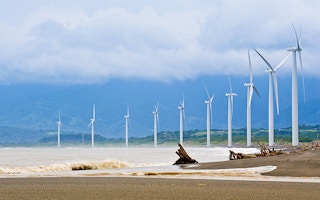Limiting global temperature rise to 1.5 degrees Celsius, a goal of the Paris Agreement on climate change, would avoid economic losses by 2050 of $12 trillion, or around 10 per cent of the world’s GDP, compared to staying on the current track of at least 3 degrees of warming, the U.N. Development Programme said on Wednesday.
Sticking to the 1.5 degree limit is feasible, it said in a report for the Climate Vulnerable Forum, a group of more than 40 countries most at risk from climate change.
“1.5 degrees has been a key call of vulnerable countries because it is only that level that will protect the survival of our people and environment,” said Kare Debassa, Ethiopia’s state minister for the environment, at U.N. climate talks in Morocco.
Meeting the goal would require cutting carbon emissions to zero by 2050, and a rapid transition to 100 per cent renewable energy in the power sector, said the study.
If that transition happens, it would create 68 per cent more energy-related jobs in 2030, and help provide clean power to the 1.1 billion people who lack electricity, bringing huge development benefits, it added.
“
For developed and developing countries alike, the much lower climate damages in a 1.5C pathway means that economic growth opportunities can largely be preserved.
Michiel Schaeffer, co-director, Climate Analytics
The Paris Agreement, which has now been ratified by 110 countries, pledges to keep global warming “well below” 2 degrees Celsius above pre-industrial times and strive for a lower limit of 1.5 degrees.
“For developed and developing countries alike, the much lower climate damages in a 1.5C pathway means that economic growth opportunities can largely be preserved,” said Michiel Schaeffer, co-director of climate science institute Climate Analytics and co-editor of the report.
“In the absence of climate action, these opportunities would be substantially reduced by the 2040s,” he added.
But a separate climate change performance index, released on Wednesday, showed that no major emitter is yet on track to meet the 1.5 to 2 degree limit, according to thinktank Germanwatch.
The U.N. Development Programme report shows that staying under 1.5 degrees of warming would reduce by a full month the length of extreme heat waves each year for most tropical regions by mid-century, compared with 2 degrees.
It also says holding average temperature rise to the lower limit would allow the world to save at least 10 per cent of coral reefs, compared with 2 degrees, which would see virtually all of them disappear.
If warming stays below 1.5 degrees, it would also reduce losses to key crops, including wheat, by 10 to 15 per cent by 2050 compared with 2 degrees, for regions of Africa and Central America.
Help needed
The report noted that putting in place the policies required to meet the 1.5 degree Celsius goal would mean countries that “were not participants in the past system of high carbon wealth creation will need help from those that were”.
Poorer countries “still require assistance to access new and clean energy technologies they don’t yet have, to bridge investment shortfalls when they leave the well-trodden carbon path, and to develop the skills and know-how that are still far more widespread in large and advanced economies,” Climate Vulnerable Forum ministers wrote in a preface to the report.
Ramping up the provision of international finance and technical expertise to developing countries is on the table at the U.N. talks in Marrakesh, where the report was launched. Under the Paris Agreement, a committee will be set up to help build capacity to implement national climate action plans.
If all countries embrace low-emissions development, renewable energy could be five times cheaper or more by 2050, the ministers noted in the report. “That is a vision of a low cost energy future we believe everyone wants and should get,” they added.
This story was published with permission from Thomson Reuters Foundation, the charitable arm of Thomson Reuters, that covers humanitarian news, women’s rights, trafficking, property rights and climate change. Visit http://news.trust.org.










